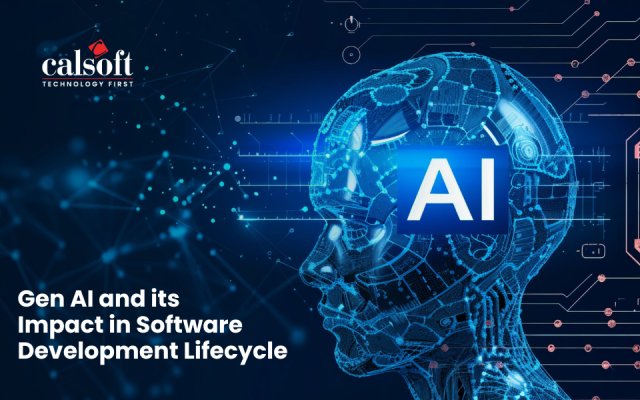In our last blog, we discussed the upcoming technology trends and their impact in 2024 and their influence on enterprises today and for the days to come. In this blog, we will delve deeper into the impact of these technologies from the perspective of the CXOs. Some of these trends have already manifested into the enterprise strategy and have embedded themselves into the business process since 2022. We have already seen the impact of Generative Artificial Intelligence (GenAI), and Cloud in play. But, given the need to move towards sustainable technology, we must wait and see how these technologies integrate with sustainable technology, paving the way for upgrading legacy infrastructure without causing a significant dent in the organization’s budget while achieving profitability. Let’s dive deeper.
The need of the hour is enhanced collaboration with engineering and technology leaders for better and faster deliverables and engaging with sustainable technology.- Simultaneously, it is crucial to ensure optimized workflows, and streamlined processes, and minimize the risks, especially in today’s digital landscape. To facilitate this, organizations would have to navigate through 3 vital challenges-
- Data Management
- Cloud Computing and Cybersecurity
- Sustainability and ROIs
Leveraging sustainable applications to effectively meet the above 3 challenges can be systematically tackled.
Data Management
In the era of Digital, data is the new fuel. To get ahead, we need to leverage data effectively and efficiently to unlock new insights and new revenue streams, paving the way for new products and product roadmaps. However, it is not without any risks. With the surge in volumes of data being produced through multiple disparate channels, there are certain vulnerabilities associated with data sets. For enterprises, these vulnerabilities might relate to the data sensitivity about internal IPs, People, and processes.
Data management woes are a growing area of concern for the CXOs of enterprises that have significantly invested their budget in GenAI, as they run the risk of exposing their internal data to Large Language Models (LLMs), potentially exposing the enterprises to legal and ethical conundrums. The solution to this?
Incorporation of Data Loss Prevention (DLP) software within the existing processes. Engaging with DLP tools helps identify attempts to use or access sensitive data and ensures necessary action to protect that data. Today DLP platforms employ advanced artificial intelligence and machine learning techniques to improve functionality and performance.
CXOs must take a multifaceted approach to tackle the issue of effective data management. There is a need to first identify permissible apps across the organization and then implement controls that can empower users to use them to their fullest potential yet safeguard the organization from risks. Employing DLPs to identify sensitive and high-risk data also needs to be incorporated to make enterprise operations smooth and efficient.
Cloud Computing and Cybersecurity
With the advent of Artificial Intelligence, we have seen a surge in secured cloud environments and high-end Graphical Processing Units (GPUs). To match the requirements of real-time processing, high throughputs, and low latency, CXOs must tap into the cloud’s centralized nature to enhance collaboration, and transparency and simultaneously leveraging the potential to achieve scalability. To thwart the risks, one must place security measures like multi-factor authentication (MFA), to minimize the security risks. From a CXO point of view, it is safe to say Cloud Computing is going to solidify its position and will continue to drive the trends, as digital adoption metrics only continue to grow. In addition to this, the arrival of GenAI to the scene is only adding to the scope and broadening the horizons of cloud computing. With proper security measures in place, this trend can certainly optimize the infrastructure, and enhance Customer Experience (CX).
Sustainable Technologies
At Calsoft, we are slowly but steadily integrating sustainability into our infrastructure and workforce. To further achieve our targets, as a CXO we must enforce-
- It optimized resource usage by leveraging technologies like cloud computing, IoT (Internet of Things), and more. This can be further optimized by implementing resource-efficient coding which ensures leveraging minimal computational resources and optimized server loads.
- Promote the culture of Sustainable Decision-making using robust Data Analytics mechanisms and create a decision support system that can process the data and churn out insights in real-time.
CXOs must help organizations navigate through complex sustainability maps by setting visions and priorities, fostering a culture of collaboration by breaking down the siloes and promoting a culture of knowledge sharing. We also need to take accountability for measuring the impact of the various software being employed, and how it is enabling us to achieve our goals. As a CXO, one should also ensure that we engage the stakeholders be they internal or external to drive organizations’ commitments toward sustainable technologies, and thereby maximize the effectiveness of Sustainable Technologies.
In a Nutshell
Interoperability is vital for businesses to harness new technologies without discarding existing IT infrastructures. While enterprises traditionally relied on point-to-point integrations for interoperability, today’s GenAI era demands a more strategic approach. Data management, Cloud computing, and Sustainability are pivotal elements that, when synchronized, enhance enterprise efficiency and customer experience while maximizing return on investment. In the current landscape with evolving trends, avoiding an entangled web of complications from costly point-to-point integrations is crucial. This synergy of Data management, Cloud computing, and Sustainability ensures the adoption of the trends for the long-term success of the business. As a technology-first organization, Calsoft is enabling organizations to enforce these changes, while driving innovation from the forefront.






